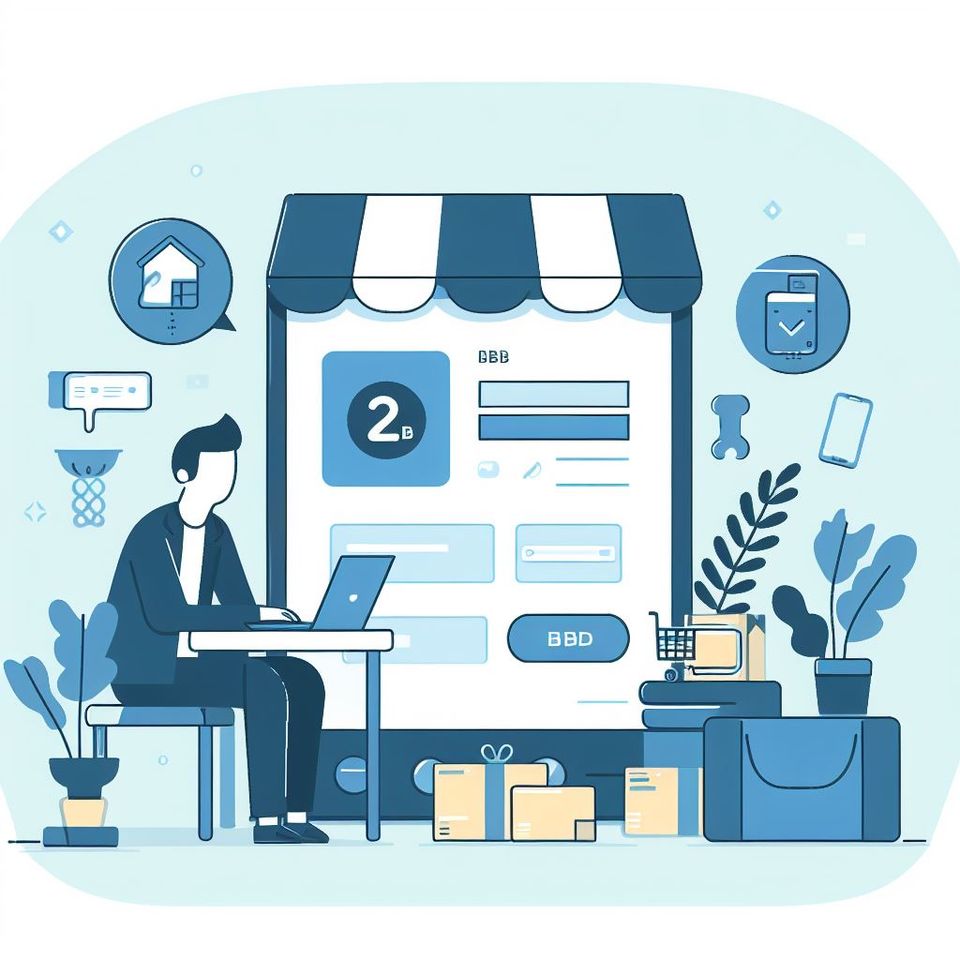UX-Driven B2B eCommerce Checkout Experience

User experience (UX) is an underrated force behind successful B2B e-commerce operations. In this article, we will explore the current state of the payment user experience in B2B e-commerce, highlighting both the pitfalls and the opportunities it presents. We will discover the significance of a user-centric strategy and UX writing, and provide 7 compelling use cases, complete with sample UX writing messages, to illustrate their power in improving conversion rates, reducing cart abandonment, and increasing revenues.
The State of Payment User Experience in B2B E-commerce
Recent data underscores the pressing need for improved UX in B2B e-commerce payments. According to TreviPay, 82% of B2B customers would choose a vendor over others if that vendor offered invoicing at checkout with 30-, 60- or 90-day payment terms. Flexible payment options are just one way to level up the UX and checkout experience for B2B buyers. However, many B2B organizations still lag in this regard, causing frustrations for both buyers and suppliers. Let's examine some of the common pitfalls:
Pitfall #1: Complex and Confusing Checkout Processes
Many B2B e-commerce platforms burden users with complex, multi-step checkout processes. This includes excessive forms, redundant fields, and confusing navigation. The result is high cart abandonment rates and missed revenue opportunities.
Pitfall #2: Ambiguous Language and Jargon
B2B payments often involve intricate financial terminology. Using technical jargon or unclear language can confuse users and hinder the completion of payments. For instance, terms like "net terms" and "DPO" may be familiar to finance professionals but can be baffling to others.
Pitfall #3: Lack of Personalization
Personalization is a vital aspect of modern e-commerce, yet many B2B platforms still treat users as generic entities. Tailoring the user experience to the specific needs and preferences of each buyer is an untapped opportunity for improving user satisfaction and loyalty.
Pitfall #4: Inadequate Mobile Experience
With the growing number of mobile users, a lackluster mobile experience can be detrimental to your B2B e-commerce business. Inaccessible or poorly optimized payment processes on mobile devices lead to drop-offs and lost sales.
Pitfall #5: Inefficient Error Handling
Errors are an inevitable part of any online transaction. However, poorly handled errors can lead to frustration and cart abandonment. A user-centric approach must ensure clear error messages and guidance on how to rectify the issue.
The Role of User-Centric Strategy and UX Writing
Addressing these pitfalls and harnessing the opportunities requires a fundamental shift toward user-centric strategy and UX writing. Here's how this approach can bring about substantial improvements in B2B e-commerce payment processes, complete with sample UX writing messages:
1. Clarity and Consistency in Language
❌ Avoid this: Using obscure payment terms. For example, "Proceed with your net terms."
✅ Do this: Clearly define financial terms, providing explanations where necessary. For instance, "Continue with your net terms (the number of days buyers have to pay after receiving an invoice)."
2. Streamlined Checkout Process
❌ Avoid this: A multi-step checkout process with redundant fields and unnecessary complexities.
✅ Do this: Streamline the process and provide a clear progress indicator to guide users through the steps. Sample message: "You're almost there! Just a few more steps to complete your order."
3. Personalization
❌ Avoid this: A one-size-fits-all approach that treats all customers the same.
✅ Do this: Implement personalization based on user behavior and preferences. Sample message: "Here are some product recommendations based on your previous purchases."
4. Mobile Optimization
❌ Avoid this: Neglecting the mobile user experience.
✅ Do this: Prioritize mobile optimization with responsive design. Sample message: "Enjoy a seamless checkout experience on your mobile device."
5. Error Handling
❌ Avoid this: Vague error messages that leave users frustrated.
✅ Do this: Provide clear, actionable error messages with guidance on resolving the issue. Sample message: "Hmm, looks like there was an issue. Please double-check your payment details and try again."
Use Cases Demonstrating the Power of UX Writing
1. Clear Payment Terms: Avoid using obscure payment terms. Instead, provide explanations when users hover over or click on these terms.
For example, when referring to "net terms," a tooltip can clarify, "Net terms represent the number of days buyers have to pay after receiving an invoice."
2. Progress Indicators: A progress bar that indicates the steps in the checkout process can reduce user anxiety and guide them through the payment process efficiently.
Sample message: "Step 1 of 3: Review and Confirm Your Order."
3. Personalized Offers: Present users with customized offers based on their previous purchase history or browsing behavior, increasing the likelihood of a successful transaction.
Sample message: "Exclusive offer for you: 10% off on your favorite products!"
4. Responsive Design: Ensure that the checkout process is smooth and user-friendly on all devices, from desktop to mobile. A responsive design that adapts to screen size is a must.
Sample message: "Our website adapts to your screen size for a seamless experience on any device."
5. Error Prevention: Implement real-time error prevention mechanisms. For example, if a user attempts to order a quantity of products that exceeds available stock, provide an alert and suggest a reasonable quantity adjustment. Sample message: "Sorry, we only have 5 in stock. Please adjust the quantity."
6. Simplified Forms: Avoid overwhelming users with extensive forms. Instead, employ progressive profiling, collecting information in smaller, manageable steps. This can reduce friction and increase conversion rates.
Sample message: "Let's take it one step at a time. We'll start with your shipping address."
7. Confirmation and Feedback: After a successful transaction, offer clear confirmation messages along with the next steps, such as order tracking. Provide feedback to reassure users and improve the overall experience.
Sample message: "Your order is confirmed! You'll receive a confirmation email shortly with tracking details. Please double-check your junk/spam folder just in case. "
The Business Impact of User-Centric UX
The impact of user-centric UX on B2B e-commerce payments is not just about creating a more pleasant experience for users; it directly influences critical business metrics:
1. Increased Conversion Rates: A user-friendly payment process leads to higher conversion rates as more users complete their transactions. This, in turn, contributes to revenue growth.
2. Reduced Cart Abandonment: Cart abandonment rates can be reduced by addressing common pain points, and salvaging potentially lost revenue.
3. Customer Loyalty and Retention: An improved user experience fosters customer satisfaction, which can result in repeat business and long-term customer relationships.
4. Competitive Advantage: In a crowded B2B e-commerce market, businesses with superior user experiences gain a significant competitive edge.
5. Reduced Support Costs: A well-designed payment process with clear language and error handling can lower support inquiries and costs.
A Digital-First Imperative
In the digital-first era, enhancing the B2B e-commerce payment experience is not just a matter of good practice; it's a necessity for staying competitive and thriving. User-centric design and UX writing are the keys to success, enabling businesses to align their user experiences with customer expectations, improve conversion rates, reduce cart abandonment, and increase revenues.
Ready to transform your B2B payment process and unlock its full potential? Contact WDIR, the leading agency in user experience for B2B payments, and let us help you transform your e-commerce operations to meet the demands of the digital-first world.
With the right user-centric strategy and UX writing, your business can be at the forefront of B2B e-commerce, providing your customers with seamless, intuitive, and rewarding payment experiences. Don't wait, start your transformation today!
